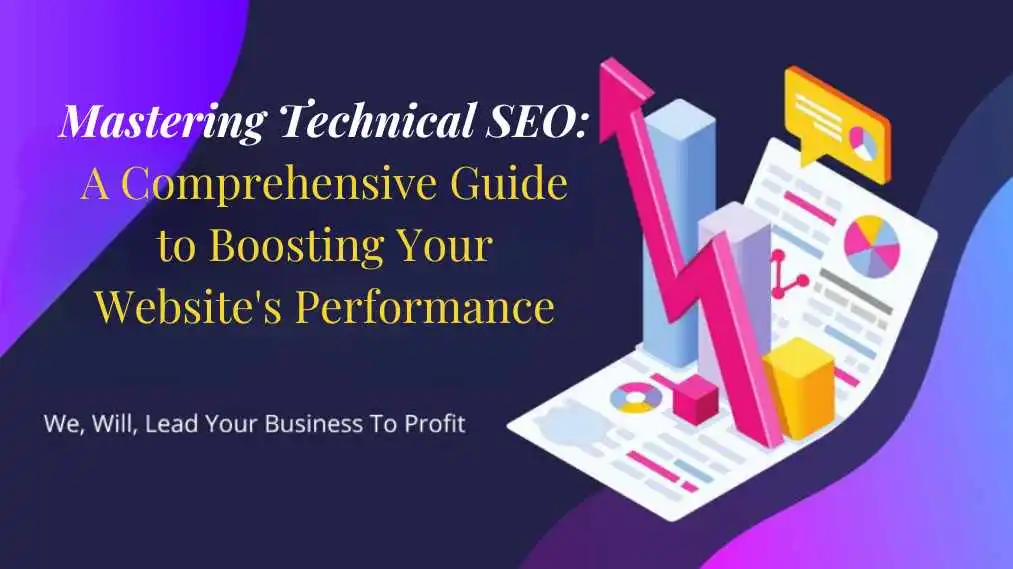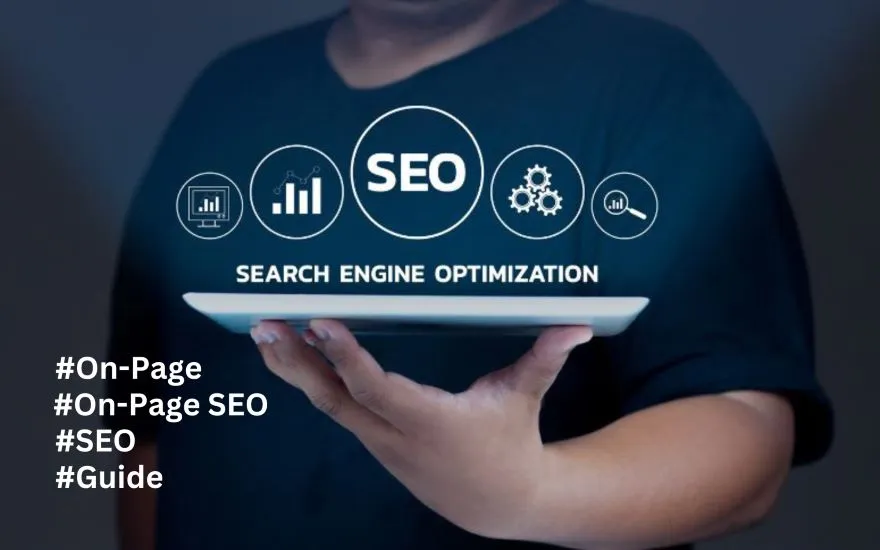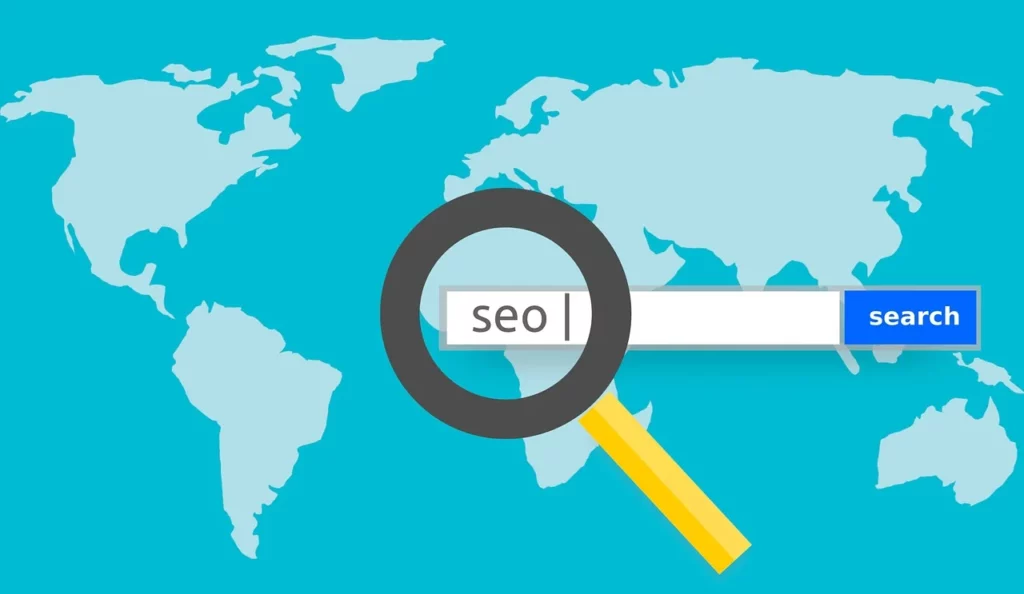
It’s crucial to implement effective strategies for success in paid search advertising to ensure your business stands out in a competitive landscape. By focusing on your website’s content, optimizing keywords, and targeting your ideal customers, you can attract more leads and drive conversions. At Mister Nguyen Agency, we understand that integrating paid search with your social media and design brand can enhance your reach and engagement. This guide will equip you with actionable insights to elevate your paid search campaigns and connect with potential customers effectively.
Understanding Paid Search Advertising
While navigating the digital landscape, it’s crucial to understand the foundational concepts behind paid search advertising. This form of online advertising allows you to bid on specific keywords relevant to your business, ensuring that your ads appear prominently in search engine results when potential customers are looking for services or products you offer. Through paid search, you can effectively target an audience that is already in the market for what you sell, making it a powerful tool to drive traffic to your website and ultimately convert visitors into leads.
Definition and Overview
Advertising through paid search platforms, such as Google Ads, enables businesses like yours to gain visibility on search engine results pages (SERPs). When users search for keywords related to your offerings, your ads can appear at the top or bottom of their search results, increasing the likelihood that they will engage with your content. Whether you aim to boost website traffic, generate leads, or enhance brand awareness, paid search advertising offers a strategic approach to meet diverse marketing goals.
Key Terminology
An understanding of key terminology is crucial for anyone looking to excel in paid search advertising. Here are a few critical terms you should know:
- Click-Through Rate (CTR): This metric measures the number of clicks your ad receives divided by the number of times it is displayed, indicating how effectively your ad attracts attention.
- Cost Per Click (CPC): This is the amount you pay each time someone clicks on your ad, allowing you to control your budget and measure the value of the traffic you’re generating.
- Conversion Rate: This percentage represents the number of visitors who take a desired action after clicking on your ad, such as filling out a form or making a purchase.
To effectively utilize paid search advertising, you should familiarize yourself with these terms and metrics. They not only help you navigate your campaigns but also provide insights into how well your ads perform. Understanding the relationship between these parameters will allow you to make informed decisions that directly affect your return on investment.
Importance of Paid Search Advertising
To establish a successful online presence, investing in paid search advertising can significantly amplify your reach and visibility. In a landscape where customers often turn to search engines to find solutions to their needs, being present at the moment of search dramatically increases your chances of capturing leads. By optimizing your Google Ads campaigns and targeting local keywords specific to your area, you can attract qualified customers who are ready to engage with your business.
Moreover, the benefits of paid search advertising extend beyond immediate results. It allows you to test various messaging and strategies to see what resonates best with your audience. By employing A/B testing and monitoring key performance metrics, you can continuously refine your approach and enhance your advertising effectiveness. This adaptability is crucial in today’s fast-paced digital marketing environment, and it positions your business as a competitive force in attracting new customers.
It’s crucial to recognize that paid search advertising is not a one-time effort but an ongoing process. As you learn from your campaigns and adjust your strategies, you can improve your results over time, ensuring that your business remains relevant and appealing to your target market. By investing the time and resources into understanding this advertising channel, you position yourself for long-term success.
Setting Clear Objectives
There’s no doubt that having well-defined objectives is pivotal for the success of your paid search advertising campaigns. Whether you aim to increase website traffic, generate high-quality leads, improve sales, or enhance brand awareness, setting specific and measurable goals will guide your strategies and tactics. Your goals act as the foundation for your campaigns and help you maintain focus while tracking your progress in real-time. By clearly defining what you want to achieve, you can tailor your efforts to align with your overall business objectives and ensure that your advertising spend is effective.
Identifying Business Goals
Objectives can vary based on your business’s unique needs and circumstances. For example, if you’re a dental clinic, your primary goal might be to drive appointment bookings from families in your locality. Conversely, a plumbing service may prioritize acquiring leads from homeowners needing immediate repair assistance. By understanding your target audience and their immediate needs, you can craft a targeted approach that resonates with them and drives better results. Take the time to evaluate what success looks like for your business.
Aligning Objectives with Paid Search Strategies
To effectively align your objectives with your paid search strategies, it’s crucial to translate your goals into actionable tactics within your campaigns. For instance, if your goal is to increase website traffic, focus on optimizing your ad copy and targeting relevant keywords that your ideal customers are searching for. Utilize compelling calls-to-action and geographical targeting to enhance engagement. Each action you take should be aimed at fulfilling your specific objectives, which in turn maximizes your ROI and improves lead quality.
It’s equally important to remember that your objectives may evolve over time as your business grows or as market conditions change. Regularly revisiting and adjusting your strategies ensures they remain aligned with your objectives and responsive to emerging opportunities. Consider utilizing insights gained from your ongoing campaigns to refine your approaches and enhance your overall effectiveness.
Measuring Success
Objectives aren’t just about setting targets; they also involve measuring your success against those goals. You need to establish key performance indicators (KPIs) that allow you to evaluate the effectiveness of your paid search advertising efforts. This includes metrics such as click-through rates (CTR), conversion rates, and cost per click (CPC). By regularly monitoring these KPIs, you gain valuable insights into how well your campaigns are performing and where adjustments may be necessary.
Paid search advertising gives you access to robust tools for tracking the performance of your campaigns. For instance, Google Analytics can help you set up conversion tracking for your ads, allowing you to see how effectively they drive desired actions, such as lead form submissions or purchases on your website. Leverage these tools to stay informed about your progress and make data-driven decisions that will steer your business towards greater success, particularly if you’re collaborating with experts like Mister Nguyen Agency to optimize your online presence.
Audience Analysis
Your success in paid search advertising largely depends on how well you understand your audience. By conducting thorough audience analysis, you can tailor your campaigns to target the right customers effectively. This involves not only identifying who your ideal customers are, but also understanding their motivations and behaviors in the digital space. At Mister Nguyen Agency, we emphasize the importance of audience analysis as a foundation for building a winning strategy in paid search advertising, as this ensures each marketing dollar spent is directed towards maximizing ROI and generating leads for your business.
Defining Target Demographics
The first step in audience analysis is to define your target demographics. Consider imperative factors such as age, gender, location, and interests. For example, if your business is a pediatric clinic, you would focus on families with young children. Conversely, a service like plumbing may aim at targeting homeowners. By pinpointing these demographics, you position your ads in front of individuals who are more likely to engage with your services, thus increasing traffic to your website and ultimately driving conversions.
Understanding Consumer Behavior
With a clear idea of who your audience is, the next critical component is understanding consumer behavior. Analyzing how your target customers search for services and products online provides invaluable insights into their preferences and buying habits. Seek to identify patterns such as the types of keywords they use, their browsing habits, and their interactions across social media platforms. Understanding these behaviors helps you craft ads that resonate and respond to the needs of your potential leads.
Consumer behavior analysis allows you to predict how customers will respond to your ads and adapt your marketing strategies accordingly. By leveraging this information, you can enhance your engagements and cater your messaging to better connect with your target market. Ensuring that your ads appear at the right moment, with the right message, significantly boosts your chances of converting interests into tangible leads.
Segmenting Your Audience
Understanding the different segments within your audience can be instrumental in refining your paid search advertising strategy. Segmenting your audience enables you to address the unique needs of varying customer groups effectively. By dividing your audience based on criteria such as demographics, location, purchasing behavior, and interests, you can create tailored campaigns that resonate on a personal level. For instance, a marketing campaign targeting local customers using geo-targeting can help improve your overall performance and reduce wasted ad spend.
Your audience segmentation should evolve based on the data you gather over time. Regularly assessing the performance of your campaigns allows you to adjust your targeting to maximize effectiveness. This adaptive approach ensures that your strategies remain relevant and optimized for lead generation, ultimately driving more visitors to your website and increasing your business’s revenue potential.
Thorough Keyword Research
Importance of Keywords in Paid Search

To build a successful paid search campaign, understanding the importance of keywords is fundamental. Keywords serve as the bridge between what your potential customers are searching for and the services or products your website offers.
Additionally, keywords play a critical role in determining your ad’s relevance, which can directly affect your click-through rate (CTR) and conversion rate. When your ads align closely with the keywords being searched, you’re more likely to capture the interest of potential customers. This value is often reflected in your ad performance metrics, giving your insight into what your audience is looking for and adjusting your strategy accordingly.
Tools for Keyword Research
Thorough keyword research involves leveraging various tools that can help you identify high-value keywords for your business. Tools like Google Keyword Planner can provide insights into search volumes, competition levels, and related keywords, allowing you to make informed choices. By analyzing these metrics, you can focus on keywords that not only resonate with your target audience but also have the potential for high return on investment (ROI).
Furthermore, utilizing competitor analysis tools can illuminate what keywords your competition is targeting. This can help you discover gaps in their approach and provide opportunities for your business to stand out. By having a well-rounded keyword strategy, you position your campaigns to be more effective and targeted toward your ideal customers.
For instance, while using Google Keyword Planner, you can input broad terms related to your business and discover related keywords along with their search volume and competitive landscape. Such insights allow you to develop a more nuanced keyword strategy, which could include geo-targeted keywords that capture your local audience effectively.
Long-Tail Keyword Strategies
Tools like Google Search Console and Answer the Public can help you uncover long-tail keywords that are specific to your services. Long-tail keywords, such as “affordable emergency plumbing services intend to have lower competition and higher conversion rates. By focusing on these more specific phrases, you can attract highly relevant traffic to your website and connect with customers who are already looking for exactly what you offer.
Moreover, implementing long-tail keyword strategies can enhance your overall paid search results. When you target these phrases, you’re not just increasing traffic; you’re bringing in qualified leads who are likely to convert into customers. This means your ads are more efficient, making better use of your ad budget and ultimately contributing to your business’s growth.
Understanding the significance of long-tail keywords in your strategy is crucial. These keywords often reflect the specific needs and intents of potential customers, allowing you to create highly targeted ads that stand out in search results. By integrating such targeted phrases into your advertising campaigns, you can enhance your visibility and effectiveness, ensuring your business scales higher in the competitive landscape of paid search advertising.
Creating Effective Ad Campaigns

Despite the fast-paced nature of the digital advertising landscape, creating effective ad campaigns requires a strategic approach that goes beyond merely writing an ad and setting a budget. Effective campaigns are built on a foundation of understanding your customers and refining your methods to ensure you attract the right audience while achieving your goals. With paid search advertising, especially through platforms like Google Ads, your ad copy must resonate with potential customers, leading them to your website and converting them into valuable leads for your business.
Writing Compelling Ad Copy
Copy that captivates your target audience is necessary for driving engagement and clicks. When crafting your ad copy, ensure that your headlines are not only clear and attention-grabbing but also include relevant keywords that reflect what your users are searching for. For instance, if you operate a local plumbing service, it’s effective to highlight your geographical location within the ad, such as “Reliable Plumbing Services. This aligns your ad with local searches, making it more visible to potential customers in your area.
Additionally, incorporate a strong call to action (CTA) within your ad copy. Phrases like “Call Now” or “Get a Free Quote” guide customers on what step to take next and can significantly improve your click-through rates (CTR). The objective is to engage your audience, convey the value of your services, and encourage immediate action. Do not forget, your ad is often the first impression customers have of your business, so make it compelling and relevant.
Utilizing Ad Extensions
With Google Ads, you have the opportunity to enhance your advertisements further through ad extensions, which provide additional information to users without requiring extra clicks. This information can include your business’s phone number, location, and links to specific pages on your website. By incorporating these extensions, you offer potential customers immediate access to vital details, making it easier for them to choose your services over competitors.
Extensions not only increase the visibility of your ads but can also improve your Quality Score, a crucial factor in determining how your ads perform in search results. Local ad extensions are particularly effective for businesses looking to attract nearby customers, as they showcase your contact information prominently, thus fostering trust and engagement within your community. When your ad stands out with useful information, you’re more likely to convert clicks into leads.
Importance of A/B Testing
Any successful advertising strategy should include A/B testing, which allows you to compare different versions of your ads to determine which performs better. This method involves changing one aspect of your ad, such as the headline or CTA, and then measuring which version drives more traffic to your website. For instance, if you notice that one CTA variant results in a higher conversion rate than another, you can adjust your campaigns accordingly. Regular testing can provide actionable insights that refine your ad strategies over time.
Writing ads without testing can lead to missed opportunities for optimization. By embracing an A/B testing strategy, you continually adapt your messages to better resonate with your audience. This not only helps increase engagement but also enhances your overall advertising performance. The data gathered from A/B testing enables you to make informed decisions that maximize your budget and improve your ad effectiveness over time with Mister Nguyen Agency. By integrating these strategies, you build a robust approach to capturing leads and growing your business.
Landing Page Optimization
Keep in mind that your landing page is a critical component of your paid search advertising campaign. It serves as the first impression for potential customers who click on your ads, and it’s imperative to optimize it to maximize conversions. A well-optimized landing page can mean the difference between a casual visitor and a valuable lead for your business. Focusing on your landing page’s design and content is crucial in ensuring that your efforts in paid search advertising yield positive results.
Elements of a High-Converting Landing Page
To create a high-converting landing page, you need to incorporate several key elements that appeal to your target audience. First, ensure your headline is compelling and clearly outlines the value proposition of your offer. This is the first thing your visitors will see after clicking your ad, so it needs to grab their attention immediately. Including bullet points to highlight the benefits of your services can also engage visitors and encourage them to read further. Finally, a strong call to action (CTA) is critical. Make it clear what you want your customers to do next—whether it’s filling out a form or calling your business directly.
Ensuring Message Consistency
High-converting landing pages maintain message consistency to bridge the gap between the advertisement and the landing page. When potential customers click on your ad, they should find the same promises and offers they saw in your ad copy. A disconnect between your ad’s message and your landing page can lead to customer frustration and a significant drop in conversions. For instance, if your ad focuses on affordable plumbing services but your landing page discusses a variety of unrelated services, potential customers may leave without taking action. Always align your landing pagewith the ad’s message and the intended audience.
This consistency not only builds trust but also reinforces the idea that your business delivers what it promises. By ensuring that your ad and landing page content match, you are increasing the likelihood that visitors will convert into leads or customers. Remember that clear communication throughout the customer journey establishes your credibility and enhances the overall user experience.
Usability and Design Considerations
High-converting landing pages are designed with usability at the forefront. A user-friendly layout, easy navigation, and a mobile-responsive design can significantly impact how visitors interact with your page. Your landing page should guide users naturally towards your desired action, whether that’s signing up for a newsletter, requesting a quote, or making a purchase. Use clear visuals and limit distractions to keep customers focused on the information that matters most.
A clean and aesthetically pleasing design should not be overlooked in the importance of usability. The layout should complement the text and support a seamless experience. Additionally, fast loading times are imperative; research shows that 47% of customers expect a page to load in two seconds or less. By prioritizing usability and design on your landing pages, you empower your business to create a more engaging and effective customer journey.
Budgeting and Bidding Strategies
After establishing clear goals for your paid search advertising campaigns, you need to focus on effective budgeting and bidding strategies. These elements are crucial in ensuring that your business remains competitive while maximizing ROI. Proper budgeting allows you to allocate resources effectively and gives you the flexibility to scale your campaigns as needed. Likewise, understanding various bidding strategies helps you manage your ad placements efficiently to attract potential customers and generate leads.
Setting an Advertiser Budget
For setting a budget, you should first determine how much you are willing to spend on advertising to drive traffic and convert leads into sales. Start small if you’re new to paid search advertising; a modest initial investment can help you understand what works best for your audience. As you observe the performance metrics of your campaigns, you can gradually scale your budget to optimize results. Remember to allocate funds based on high-value keywords that are likely to yield the best returns for your business.
For example, if you have identified that certain keywords drive more sales, consider allocating a higher percentage of your budget to those campaigns. Additionally, keeping a close watch on your leads and conversion rates will provide insight into whether your budget is having the desired effect. Always be willing to make adjustments based on performance to ensure optimum spending.
Understanding Bid Types and Strategies
On the other hand, understanding bid types and strategies is vital to maximizing your paid search advertising effectiveness. Depending on your goals, you can choose from manual bidding, automated bidding, and enhanced CPC strategies. Each of these methods has its unique advantages, and selecting the appropriate bidding strategy can significantly influence your ad performance.
| Bid Type | Description |
| Manual Bidding | You control the maximum amount you’re willing to pay for each click. |
| Automated Bidding | Google adjusts bids for you based on defined goals and algorithms. |
| Enhanced CPC | Google automatically adjusts your manual bids to maximize conversions. |
| Target CPA | Bids are set to achieve a target cost per acquisition for conversions. |
| Target ROAS | Bids are optimized based on a target return on ad spend. |
This understanding will help you choose the right strategies that align with your business objectives. You can also use bid adjustments to optimize your ads based on the time of day, device type, or location, further maximizing your budget’s efficiency.
- Constantly analyze performance and adjust bids accordingly.
- Test different bidding strategies to determine the best fit for your campaigns.
- Consider competitor actions when setting your bids.
- Utilize historical data to inform your bidding decisions.
- Recognizing the intricacies of bidding can lead to better performance outcomes.
Optimizing ROI through Effective Budgeting

The key to ensuring that every dollar spent on paid search advertising yields returns lies in optimizing your ROI through effective budgeting. Regularly review your spending against the leads generated and sales made. This will guide you in refining your budgeting strategy, allowing you to allocate funds more efficiently. It’s vital to analyze which campaigns are driving the most conversions and to redirect resources from underperforming ads to those that deliver results.
Additionally, setting a flexible budget that can be adjusted based on performance metrics allows you to capitalize on peak times and opportunities for your business. This not only amplifies your chances of attracting customers but also optimizes the profitability of your advertising efforts.
Budgeting effectively is crucial for your advertising strategy. This means not only tracking current expenditure but also forecasting future needs based on projected campaign results. By maintaining a fluid budget that can adapt to real-time performance data, you can ensure that your marketing efforts with Mister Nguyen Agency yield the best return on your investment.
Monitoring and Continuous Improvement
Once again, your success in paid search advertising hinges on your ability to monitor your campaigns effectively and make continuous improvements. Taking a data-driven approach not only allows you to identify what strategies are yielding results but also helps you optimize your investment for the long term. By setting clear tracking metrics, you can regularly assess your performance, ensuring you’re attracting the right customers and generating valuable leads that drive your business goals forward.
Key Performance Indicators (KPIs)
For effective monitoring, it’s critical to define Key Performance Indicators (KPIs) that align with your campaign objectives. Common KPIs include Click-Through Rate (CTR), Conversion Rate, and Cost Per Click (CPC). By keeping a close eye on these metrics, you can determine which ads resonate with your audience, how well your landing pages convert, and how efficiently your budget is being spent. Tracking KPIs will provide you with actionable insights that can guide your optimization efforts.
For example, if your CTR is high but your conversion rates are low, it may indicate that while your ads are drawing in viewers, the messaging or offer on your landing page needs refinement. Conversely, understanding how much you are paying for each click (CPC) relative to your return on investment (ROI) can help you allocate your budget more effectively, ensuring that your online advertising efforts yield maximum returns.
Analyzing Campaign Performance
To get the most value from your data, take the time to analyze your campaign performance regularly. Utilize analytics tools to glean insights from your metrics, enabling you to see trends over time rather than just isolated figures. For instance, if you notice consistent spikes in CTR during specific times of day or varying performance across different demographics, this information can inform your future targeting and bidding strategies.
This ongoing analysis should not be a one-time effort; instead, consider making it part of your regular review process. Consistently examining the performance of various elements—such as ad copy, keywords, and landing pages—enables you to spot patterns and make informed adjustments that can enhance your overall campaign effectiveness.
Iterative Campaign Optimization
Continuous improvement is key to the success of your paid search efforts. By employing an iterative optimization approach, you can systematically test different elements of your campaigns, such as headlines, keywords, and CTAs. Running A/B tests will allow you to understand which variations perform better, thus enabling you to make data-backed decisions that refine your strategies over time.
Iterative optimization goes hand in hand with monitoring your KPIs and analyzing performance trends. As you make changes, measure their impact to see if they lead to better results. If you find that adjusting a specific keyword cluster improves your conversion rate, consider expanding that successful strategy to other related services you offer. In this way, you can foster a cycle of continuous improvement that drives sustained success for your business.
Summing up
Conclusively, successful paid search advertising requires a strategic approach that combines clear goal-setting, audience understanding, and continuous optimization. You need to identify what you want to achieve—be it increasing website traffic, generating leads, or improving sales. Tailoring your campaigns to meet the specific needs of your target audience will enable you to connect more effectively with your customers. Utilizing tools for keyword research and employing compelling ads with strong calls to action can significantly enhance your visibility and engagement within your market.
Moreover, regularly monitoring your campaigns and making data-driven adjustments is crucial for ongoing success. As you refine your strategies, don’t forget to leverage local targeting options to better serve your community and attract local customers. By implementing these strategies from Mister Nguyen Agency, you can establish a robust online presence that consistently drives leads and boosts your business growth.











